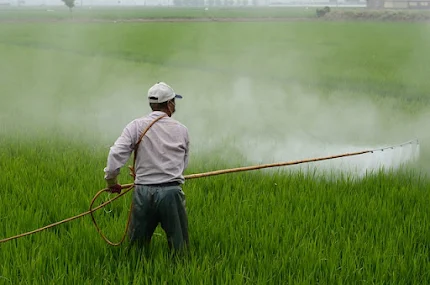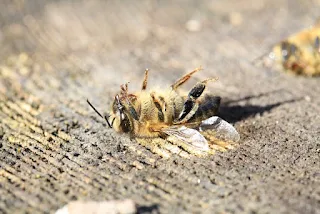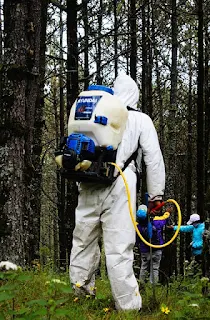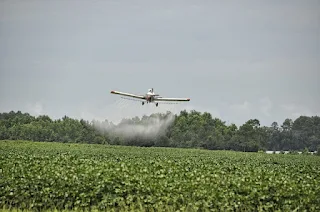The Chemical Cocktail: Understanding Common Lawn Care Products
Many popular lawn care products contain a mix of synthetic chemicals, including pesticides, herbicides, and fertilizers. These chemicals are designed to control weeds, pests, and boost the growth of grass. But at what cost? Studies have linked exposure to these chemicals to various health issues, such as respiratory problems, skin irritation, and even cancer. Moreover, they pose a significant risk to the environment, contaminating water sources and harming wildlife.
Pesticides: A Silent Killer
Pesticides are widely used to eliminate unwanted insects and pests, but their impact extends far beyond their intended targets. These chemicals can have devastating effects on non-target species, particularly pollinators like bees and butterflies. The decline of these essential species carries significant consequences for food production, biodiversity, and overall ecosystem health.
Impact on Pollinators
Pollinators, such as bees and butterflies, are vital for plant reproduction and food production. They help to fertilize plants by transferring pollen, enabling the growth of fruits, vegetables, and seeds. Unfortunately, many pesticides are toxic to pollinators, causing population declines or even the collapse of entire colonies. Some of the most concerning pesticides include:
- Neonicotinoids: These are a class of insecticides known for their high toxicity to bees and other pollinators. They have been linked to impaired foraging, navigation, and reproductive abilities in bees, contributing to colony collapse disorder.
- Organophosphates and Pyrethroids: These pesticides can cause severe health issues in humans, but they are also toxic to pollinators. Exposure to these chemicals can result in paralysis, disorientation, and death in bees and butterflies.
Impact on Food Production
The decline of pollinators due to pesticide exposure has far-reaching consequences for food production. It is estimated that pollinators are responsible for fertilizing approximately 75% of the world's crops. A reduction in their numbers can lead to reduced crop yields, higher food prices, and increased food insecurity.
Impact on Biodiversity and Ecosystem Health
Pollinators play a crucial role in maintaining biodiversity by supporting the reproduction of various plant species. A decline in their numbers can lead to a decrease in plant diversity, which, in turn, affects the entire ecosystem. A loss of plant species can disrupt food chains, reduce habitat availability for other wildlife, and ultimately destabilize ecosystems.
Indirect Effects on Other Species
The harmful effects of pesticides are not limited to pollinators. Pesticides can accumulate in soil, water, and the bodies of organisms, leading to bioaccumulation and biomagnification. This means that higher concentrations of these chemicals are found in organisms higher up the food chain, causing harm to predatory birds, mammals, and fish.
Herbicides: An Unintended Consequence
Herbicides are commonly used to control invasive weeds and promote the growth of grass. While they may be effective in achieving these goals, they also come with unintended consequences that impact the environment, biodiversity, and human health. Additionally, as long as they aren't invasive, weeds aren't all that bad anyway. We will focus on some of the most significant effects of herbicide use, highlighting specific harmful herbicides.Soil Degradation
Herbicides can have a negative impact on soil quality by disrupting the balance of microorganisms responsible for maintaining soil health. Glyphosate, the active ingredient in Roundup, is known to alter the composition of soil microbes, leading to reduced nutrient availability and increased susceptibility to erosion. This can diminish soil fertility and affect plant growth, ultimately threatening agricultural productivity.
Loss of Biodiversity
Herbicides such as 2,4-D and dicamba can inadvertently harm non-target plant species, leading to a decline in plant diversity. The loss of plant species can have cascading effects on the ecosystem, as it disrupts food chains, reduces habitat availability for wildlife, and alters the overall balance of the ecosystem. The loss of biodiversity is also a concern for genetic resources, as many plants have valuable medicinal, agricultural, or cultural significance.
Water Pollution
Herbicides can easily find their way into water sources through runoff, leaching, or drift. Atrazine, a widely used herbicide, has been found in surface water, groundwater, and even drinking water. Once in the water, these chemicals can have detrimental effects on aquatic life, including fish, amphibians, and invertebrates. Herbicides can also contaminate drinking water supplies, posing a risk to human health.
Human Health Concerns
Some herbicides, like glyphosate and 2,4-D, have been linked to a range of health issues. Glyphosate has been classified as a probable human carcinogen by the World Health Organization and has been associated with non-Hodgkin's lymphoma. Meanwhile, 2,4-D has been connected to endocrine disruption and developmental problems in children. Exposure to these chemicals can occur through direct contact, ingestion of contaminated food, or inhalation of airborne particles.
Development of Herbicide-Resistant Weeds
Much like antibiotic resistance, the widespread use of herbicides has led to the emergence of herbicide-resistant weeds, which can survive and reproduce despite the application of these chemicals. This has created an escalating cycle of herbicide use, as farmers and homeowners apply increasingly potent chemicals, such as dicamba and glufosinate, to control these resistant weeds. This cycle perpetuates the negative consequences associated with herbicide use and poses challenges for sustainable agriculture and lawn care.
Synthetic Fertilizers: Feeding the Problem
Synthetic fertilizers are frequently used to enhance the growth and appearance of lawns. While they may achieve these goals, they also contribute to a host of problems, including nutrient runoff, water pollution, and harm to aquatic life. The excessive use of synthetic fertilizers can lead to harmful algal blooms, creating dead zones in water bodies where oxygen levels plummet, and marine life suffocates.Nutrient Runoff
Synthetic fertilizers often contain high levels of nitrogen and phosphorus, which can be washed away by rain or irrigation. This nutrient runoff can enter nearby water bodies, such as streams, rivers, and lakes. The excess nutrients can upset the delicate balance of aquatic ecosystems, causing harm to both plants and animals.
Water Pollution
As mentioned earlier, nutrient runoff can lead to water pollution. Excessive amounts of nitrogen and phosphorus in water bodies can trigger eutrophication, a process where water becomes enriched with nutrients, promoting excessive plant growth. This, in turn, can reduce water clarity, decrease oxygen levels, and negatively impact aquatic life.
Harm to Aquatic Life
The increased nutrient levels resulting from synthetic fertilizer use can have detrimental effects on aquatic life. Excess nitrogen can lead to the formation of nitrate, which is toxic to fish and other aquatic organisms. Elevated phosphorus levels can promote excessive algae growth, which can deplete oxygen levels in the water, leading to fish kills and the death of other aquatic organisms.
Algal Blooms and Dead Zones
Excess nutrients from synthetic fertilizers can also contribute to the formation of harmful algal blooms. These blooms can release toxins that are harmful to fish, shellfish, mammals, birds, and even humans. Moreover, when algal blooms die off, they decompose, consuming oxygen in the process. This can create dead zones in water bodies, where oxygen levels are so low that most marine life cannot survive.
Impact on Soil Health
The overuse of synthetic fertilizers can also have negative effects on soil health. High concentrations of nutrients can lead to soil acidification, which can reduce the availability of essential nutrients, such as calcium and magnesium. Additionally, the excessive use of synthetic fertilizers can disrupt the balance of soil microorganisms, which play a crucial role in maintaining soil fertility and structure.
Children and Pets: The Most Vulnerable
Children and pets are among the most vulnerable to the harmful effects of toxic lawn care products. Their developing bodies and immune systems are more susceptible to the chemicals found in pesticides, herbicides, and fertilizers. Furthermore, they spend more time outdoors and are more likely to come into direct contact with contaminated grass, soil, or water. By choosing eco-friendly alternatives for lawn care, you can create a safer environment for your loved ones.
Government Regulations and the Future of Lawn Care
As awareness of the dangers associated with toxic lawn care products grows, many governments are taking action to regulate or ban certain chemicals. For example, some regions have banned or restricted the use of glyphosate due to its potential carcinogenic effects. However, there is still much work to be done in terms of regulation and enforcement. It's crucial for citizens to advocate for stricter regulations and the promotion of sustainable landscaping practices at the local, national, and global levels.




No comments:
Post a Comment